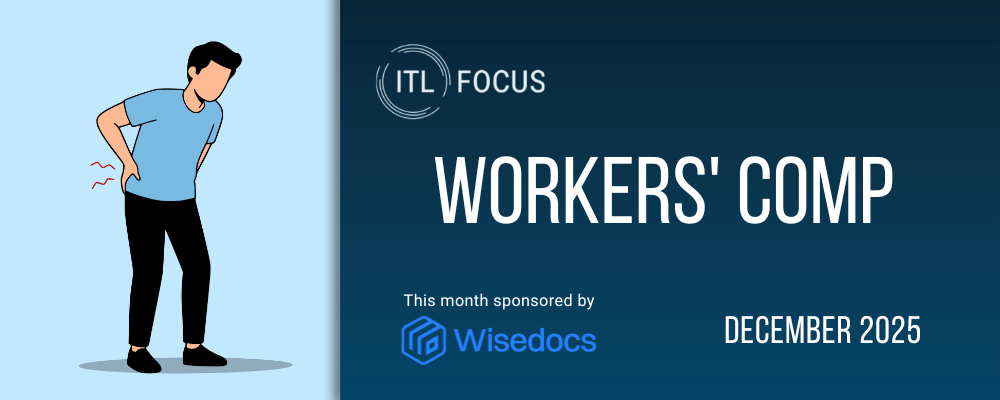1. Implement a fraud-abatement program
Employee education helps defer fraud, so creating a fraud abatement campaign that fits for your industry and includes education of employees can have a significant impact on the number of questionable claims filed. Communicate regularly with your employees about workers’ compensation and eliminate misconceptions by explaining what it is and how it works. Consider using social networks, flyers, posters, employee newsletters and guest speakers to spotlight workers’ compensation fraud as a serious crime. The guest speaker can be a representative from your insurance carrier’s special investigation unit (SIU), a local law enforcement representative who is focused on workers’ comp fraud (such as a Department of Insurance fraud investigator or deputy district attorney handling prosecutions in the fraud unit) or a representative of your contracted SIU partner. Provide employees a mechanism to report fraud anonymously, such as a fraud hotline or email system, so they can easily report suspicions. Encourage employees to share information. Insurance fraud is a felony in most states, and employers should demonstrate zero tolerance, with timely investigation of claims and reporting of suspicious claims to law enforcement.
2. Use sound hiring practices
The best defense is a strong offense. Conduct thorough pre-employment background checks to eliminate candidates who are unable to perform the job or not a good fit. If you have questions about anything you find in a background investigation, ask the applicant to explain. It is a good idea to hire an investigative agency to assist, especially if you do business in multiple states, to ensure the investigations abide by all local, state and federal laws and regulations. Consider pre-employment drug testing; drug users can be unsafe workers and are more likely to file false claims to obtain money for drugs.
3. Pave the way for return to work
Communicate to employees that every attempt will be made to get injured employees healthy again and returned to work. Prepare a comprehensive, written, return-to-work plan, with detailed job descriptions that include temporary or alternative duties, and communicate that plan to appropriate persons. The functional job description is one of the best tools for identifying the discrete and unique duties, responsibilities and accountabilities associated with varying positions. The functional job description is a part of a continuing process throughout the entire employment relationship and should track and reflect changes in organization structure, tasks, accountabilities, skills and requirements. The functional job description should document the minimum job requirements and preferred qualifications of each position (including education, experience, licenses, certificates, physical requirements and work day/hours). This description can be used in conjunction with hiring practices to ensure the applicant has the ability to perform the job. Functional descriptions are also important for medical providers to use in determining return to work following an injury, including whether the employee can return to work full duty or in a modified capacity.
4. Surveillance video equipment
Monitoring is a proven spoiler of workplace crimes. Consider both covert and overt monitoring, depending on the job site, type of claims filed and privacy concerns. If an injury is alleged, quickly secure the video and forward to your investigative partner to secure the evidence, log chain of custody and provide copies as needed. If the video does not match the employee’s description of the injury, create a strategy to share copies of the video with medical providers to ensure that only warranted benefits are obtained. Communicate with your claim professional, defense attorney and investigative partner to determine the best plan of action. For example, additional investigation may be warranted before putting the video into evidence, such as surveillance to document the employee’s current physical abilities or a recorded statement or deposition by the injured worker to memorialize his account of the injury. Your team will create a strategy to appropriately leverage the video in handling the claim and potential fraud.
5. Have a plan for when an industrial injury occurs
Provide training to leadership on how to respond when an industrial injury occurs. Respond immediately to any reported injury or rumor of potential injury. Promptly recommend your predetermined medical provider to the injured employee. A detailed description of the accident and injury should be obtained, and any relevant workplace evidence should be preserved. Have a professional investigation conducted as soon as possible. A timely investigation can help ensure the injured worker receives the appropriate benefits at the appropriate time. A thorough investigation can include statements by the injured worker, witness statements, scene inspection, photographic evidence, the securing of workplace equipment or other evidence. An investigation can also include a search of public records, criminal and civil court records, Department of Motor Vehicle records, a prior claims search, the securing of copies of records such as police report, 9-1-1 call record, OSHA report or other, as applicable. The investigation can identify potential subrogation so that the claim professional and defense attorney can pursue potential third-party liability. The investigation will also highlight suspicions; consequently, having a professional, third-party investigative agency conduct the initial compensability investigation is a critical tool in preventing fraud.
6. Familiarize yourself with investigative tools
Investigation of claims provides many benefits on workers' comp costs and is especially critical for claims that have “red flags,” to ensure that only warranted benefits are administered and that potential abuse or fraud is identified early. Technological advances have provided new investigative tools as well as enhanced the capabilities of “old-school” investigative solutions. Background investigations, Internet searches, social-network monitoring and database searches are cost-effective investigations that can be conducted quickly and provide a plethora of valuable information. Information found on social networking often includes current activities, past behavior, hobbies, interests, sports, clubs, association, vacations and more. This evidence can include both photographic evidence and written information. If the injured worker is not improving despite medical treatment, consider having surveillance conducted to determine the level of physical abilities, limitations and restrictions. Surveillance evidence provides the best impact. The investigative agency should conduct a pre-surveillance investigation that includes searching social networking sites, databases, public records and DMV records. While currently the use of drones is not legal in most states, this is technology that may be incorporated into the investigative toolbox in the near future. Field investigations are important to determine compensability of a claim, so obtain recorded statements from the injured worker and any potential witnesses. Remember that “witnesses” are not only people who may have seen the injury occur, but people who may have information about the injured worker’s prior injuries, prior claims, hobbies, other employment, activities, etc. This may include co-workers who work near the injured worker, eat lunch together, share a carpool or take breaks together. Question potential witnesses if they personally obtained photographs or video of the subject incident or scene, as this is often the case given the widespread use of smartphones. Medical facility searches and pharmaceutical searches locate prior medical records and pharmaceutical history, which can help determine compensability and apportionment, identify potential drug abuse and ensure that only warranted benefits are paid.
7. Implement a safety program
Make workplace safety a priority; a safe workplace makes fake or exaggerated injuries harder to legitimize. Hold regular safety meetings and remind employees about workplace safety through social media, posters, flyers or employee newsletters. Consider a program that rewards workers for meeting safety milestones. Encourage employees to identify potential safety issues and share their ideas. To reduce repetitive injury claims, provide onsite ergonomics solutions to ensure employees are performing their duties the correct way. Encourage prompt reporting of injuries to immediately identify and resolve any problem that may contribute to workplace injuries.
8. Create an Experienced and Specialized Team
Build a strong and dedicated team to manage your workers’ compensation claims. Your team should include experienced claim management professionals, specialized legal resources, risk managers, a licensed investigative agency specialized in workers’ compensation and an SIU with certified fraud specialists (either internal with your insurance carrier or contracted directly). Communicate with your claim professional and ensure that he is actively identifying red flags and investigating your claims in a timely fashion. Partner with a licensed investigative agency that is experienced in your industry. If insured with a carrier, communicate with the carrier’s SIU to ensure that your claims are being reviewed by fraud specialists. If you are self-insured or in a high-deductible program, partner with an investigative company that has a successful SIU. Communicate with your team regularly to ensure active handling of claims, identify suspicious claims early and build effective strategies to leverage investigative evidence to stop unwarranted benefits and fight fraud.
9. Listen
Listening to employees can provide valuable information. The injured worker may have provided key information before and after the injury. Was the employee complaining before the alleged injury about work, physical pain or personal problems? Was he disgruntled, turned down for a promotion or had a change in job duties, supervisor or responsibilities? Did the injured worker talk about family problems such as health issues, additional family responsibilities or other personal situations? This information may be relevant and should be shared with the claim team. Listen after a workplace injury and throughout the claims process, as rumors of misrepresentations or foul play may filter through the workplace. Keeping an ear to the grapevine may help in weighing a claim’s validity. Have an “open-door” policy and encourage employees to share information and report suspicions.
10. Be Familiar With the Red Flags of Workers’ Comp Fraud
- Injury reported late or on a Monday or following time off
- Exaggerated details about incident or symptoms
- Co-worker skepticism or different versions of the incident
- Disgruntled, soon-to-retire, soon-to-strike, facing layoff or involved in seasonal work that is about to end
- Unexplained or excessive time off prior to claimed injury
- Has a history of short-term employment
- New on the job, and injury is unwitnessed or suspicious
- Experiencing financial difficulties or domestic problems before filing the claim
- Recently purchased a private disability policy
- Submitted employment application with misrepresentation(s)
- First notification of injury or claim made after employee is terminated or laid off
- Reported immediately after days off or alleged injury around date of a denied vacation request
- History of substance abuse, prior injuries or prior accidents, especially soft-tissue injuries
- Is known to participate in high-risk activity such as snowboarding, drag racing or boxing
- Suspicion or tip of unreported work, cash work, seeking other employment or self-employed
- Failed to report the injury in a timely manner or “forgot” to report critical details
- History of reporting injuries, especially soft-tissue injuries
- Other family members also receiving workers' comp benefits or other “social insurance” benefits
- Is unusually familiar with workers’ comp claim handling procedures and laws
- Is consistently uncooperative, refuses to sign documents or submits documents with cross-outs
- Information that employee is active or may be exaggerating limitations
- In-house surveillance, tip or information indicating the injury may be non-industrial or not legitimate
- Refuses to provide a statement or sign a medical release
- Moves out of state or country shortly after filing claim
- Protests about returning to work or changes provider once released to work
- Details of accident are vague or contradictory, have inconsistencies or are not credible
- Reported injury has same factors of other claims reported by co-workers, especially in the same time period
- Denial or failure to report prior injury or medical treatment
- Suspected altering of checks, off-work slips, prescriptions, or suspicious mileage reimbursement
- Dramatizes physical condition or draws attention to collar, brace or other supportive devices
- Is observed moving normally or without medical devices (collar, brace, cane, etc.)








